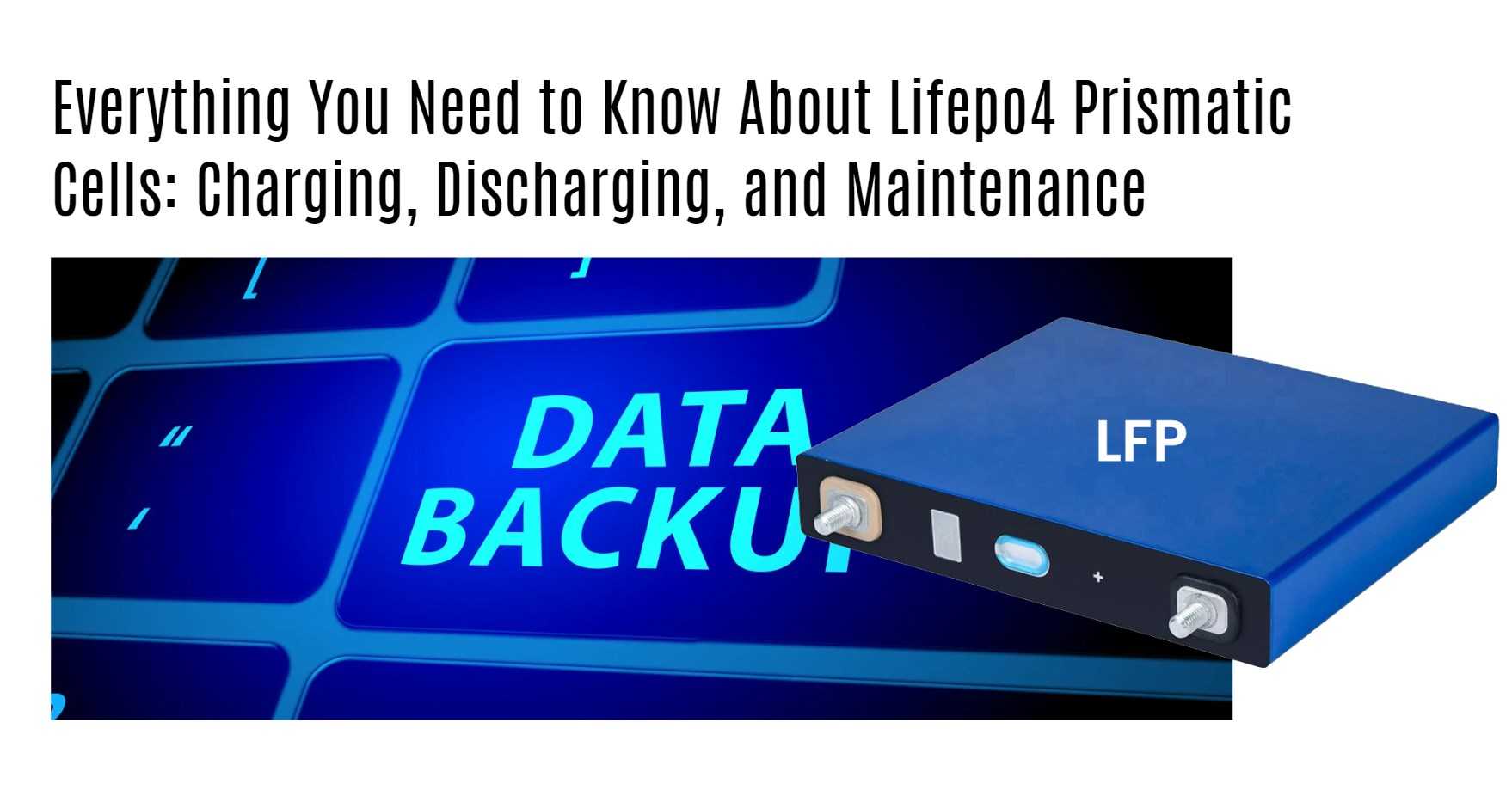Are you in search of a powerful and long-lasting battery for your electronic devices? Look no further than the Lifepo4 prismatic cell. This innovative technology provides superior performance with longer life cycles, making it a top choice for many industries. However, to ensure optimal use and longevity of your Lifepo4 prismatic cells, there are important steps to follow when charging, discharging, and maintaining them. In this blog post, we’ll explore everything you need to know about properly handling these batteries so that you can get the most out of their potential power!
What is a lifepo4 prismatic cell?
A Lifepo4 prismatic cell is a type of rechargeable battery that uses lithium iron phosphate (LiFePO4) as the cathode material. The term “prismatic” refers to the shape of the cell, which is rectangular or square in shape and designed for high energy density applications.
Compared to other types of lithium-ion batteries, such as LiCoO2 or NMC, Lifepo4 prismatic cells have several advantages. They offer a longer cycle life and are known for their thermal stability, making them less prone to overheating during charging or discharging cycles.
Due to its superior performance capabilities, this technology has become popular in various industries such as electric vehicles, renewable energy storage systems, and portable electronic devices. In addition to their reliability and durability features over time make them more cost-effective than other battery technologies over time.
It’s no surprise why many manufacturers choose Lifepo4 prismatic cells over others – they offer long-lasting power without compromising on safety!
Why use lifepo4 prismatic cells?
Lifepo4 prismatic cells are becoming increasingly popular for use in various applications, especially in the automotive and renewable energy sectors. But why exactly should you consider using them over other types of batteries? Here are some reasons:
Firstly, lifepo4 prismatic cells have a longer lifespan compared to conventional lead-acid batteries. They can last up to 10 years or more if properly maintained, making them a cost-effective option in the long run.
Secondly, these cells have excellent thermal stability and are less prone to overheating or catching fire than other lithium-ion battery types. This makes them safer for use in high-temperature situations.
Thirdly, lifepo4 prismatic cells have a high discharge rate which means they can deliver more power when needed. This is particularly useful in applications where bursts of power are required such as electric vehicles.
These cells do not contain hazardous materials like lead or cobalt which makes them environmentally friendly and easier to dispose of at end-of-life.
If you’re looking for a reliable and safe alternative to traditional batteries that also has an extended life span then lifepo4 prismatic cells may be the right choice for your application.
How to charge lifepo4 prismatic cells?
-
Charging Lifepo4 Prismatic Cells: To charge lifepo4 prismatic cells, use a charger specifically designed for these batteries and follow manufacturer guidelines. Avoid overcharging or undercharging the battery, as it can damage the cells or limit their lifespan. Monitor the temperature during charging and avoid charging in high ambient temperatures.
-
Discharging Lifepo4 Prismatic Cells: Properly discharging the battery is as important as charging it. Avoid discharging the battery below the manufacturer’s recommended threshold voltage to prevent irreversible damage. It’s recommended to keep the battery between 20% and 80% charged for optimal results.
-
Maintaining Lifepo4 Prismatic Cells: Proper maintenance is crucial for the longevity and performance of lifepo4 prismatic cells. Keep the cells cool by avoiding exposure to hot areas and direct sunlight. Avoid overcharging, over-discharging, and overdischarging. Regularly monitor voltage levels and store the cells properly when not in use.
How to discharge lifepo4 prismatic cells?
-
Checking Depth of Discharge: Lifepo4 batteries can be safely discharged to 100% without damage, making them flexible for various applications.
-
Normal Usage and Avoiding Full Discharges: Use the battery normally, but avoid excessive charging or use, as it can reduce the battery’s lifespan. Partial discharge is sufficient, and there is no need for periodic full discharge cycles.
-
Lowering Discharge Rate: Lower the discharge rate to optimize the battery’s capacity and cycle life. High-rate discharge can damage the electrodes’ elasticity, affecting performance.
-
Monitoring State of Health (SOH): Regularly monitor the battery’s SOH to ensure it is functioning properly and detect any issues early on. This helps maintain the battery’s optimal functionality.
How to maintain lifepo4 prismatic cells?
-
Keeping the Cells Cool: Lifepo4 prismatic cells perform best within a temperature range of 20°C to 35°C. Avoid exposing them to hot areas and direct sunlight to prevent overheating.
-
Avoiding Overcharging or Over-discharging: Overcharging or over-discharging lifepo4 prismatic cells can cause permanent damage and reduce their lifespan. Follow manufacturer guidelines and avoid extreme charging or discharging conditions.
-
Monitoring Voltage Levels: Regularly check the voltage levels of your lifepo4 prismatic cells to ensure they are within the recommended range. Significant drops or abnormal behavior may indicate a problem that needs attention.
-
Proper Storage: When storing lifepo4 prismatic cells, ensure they are at around 40% charge level before storage. Store them in a cool, dry place away from direct sunlight and extreme temperatures.
-
Using Quality Chargers: Use high-quality chargers specifically designed for lifepo4 prismatic cells. Using compatible chargers will help prolong the lifespan of the cells and prevent potential damage.

Does Tesla use prismatic cells?
-
Tesla’s Battery Cell History: Tesla has historically used cylindrical battery cells, which have been recognized for their advanced technology and superior performance compared to other EV manufacturers.
-
Switch to Prismatic Cells: Recent reports suggest that Tesla is planning to switch to prismatic cells, specifically lithium iron phosphate (LFP) batteries from CATL, for the Model 3 in China. This decision is driven by cost reduction, with the redesigned pack expected to save Tesla around 25% in production costs.
-
Advantages of Prismatic Cells: Prismatic cells offer advantages such as stability and a lower risk of fires. The rectangular shape of prismatic cells allows for efficient packaging and cooling, contributing to the overall performance and safety of the battery pack.




